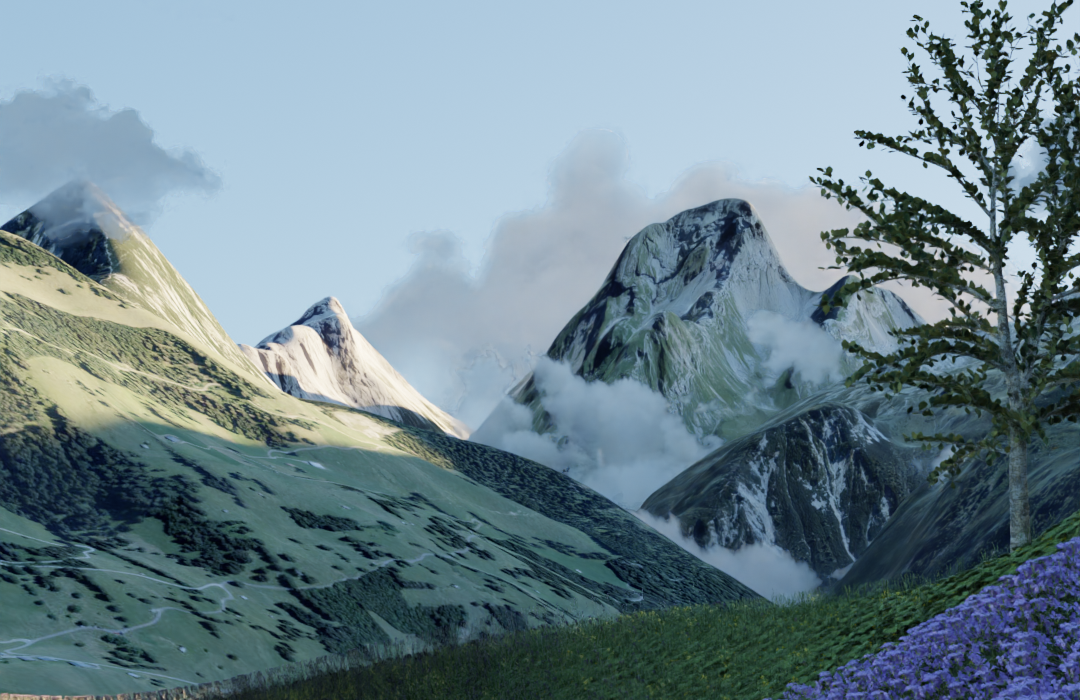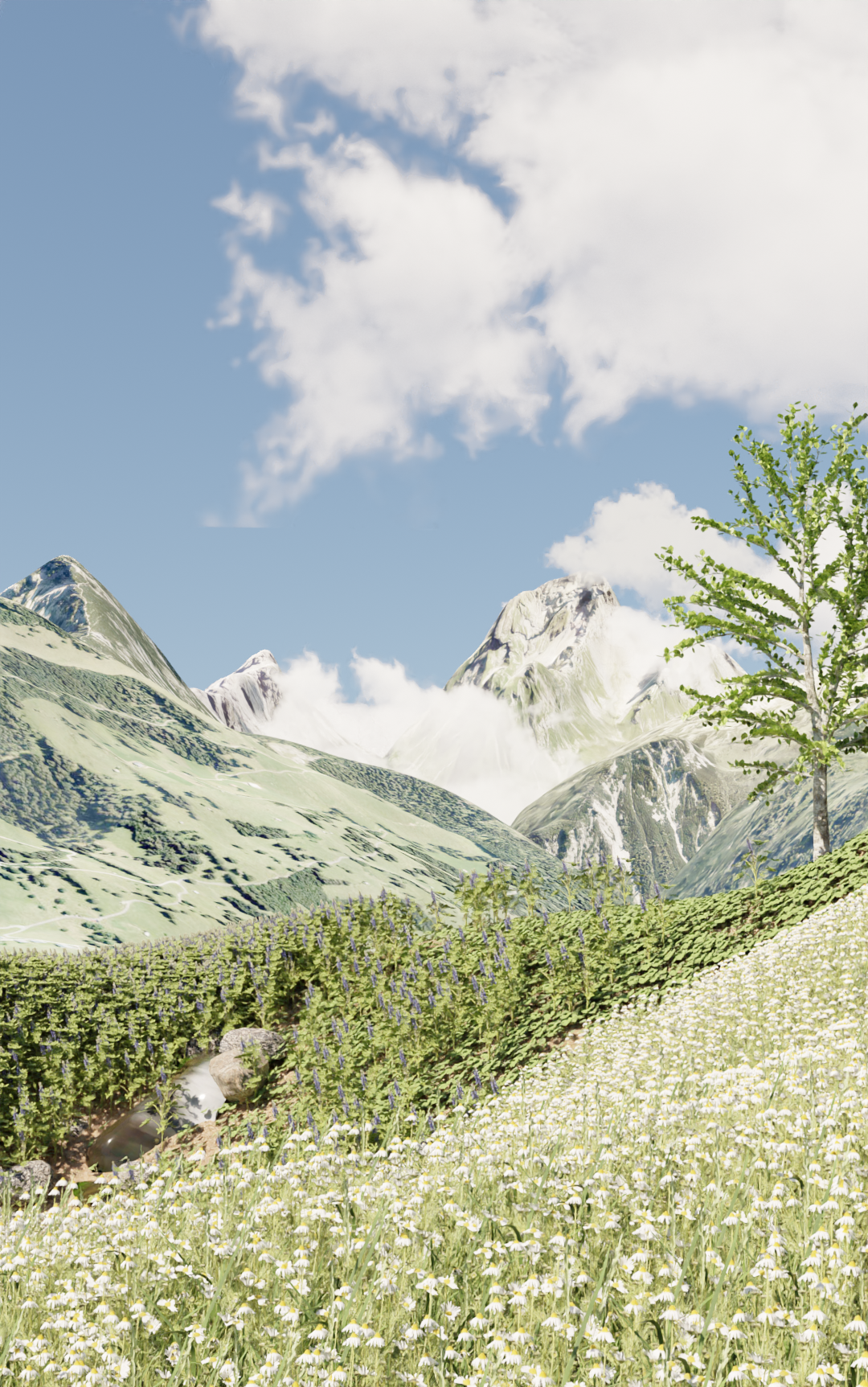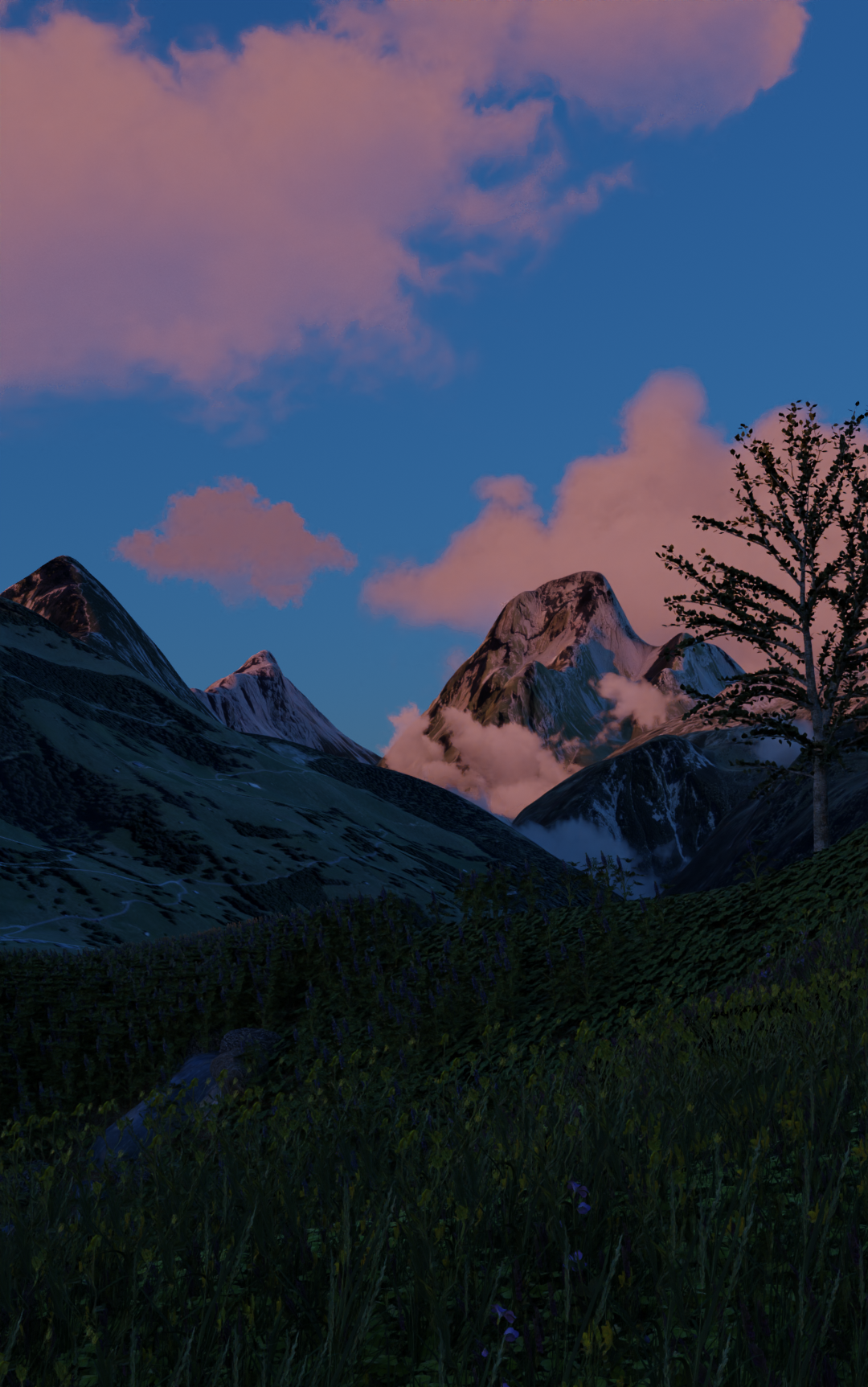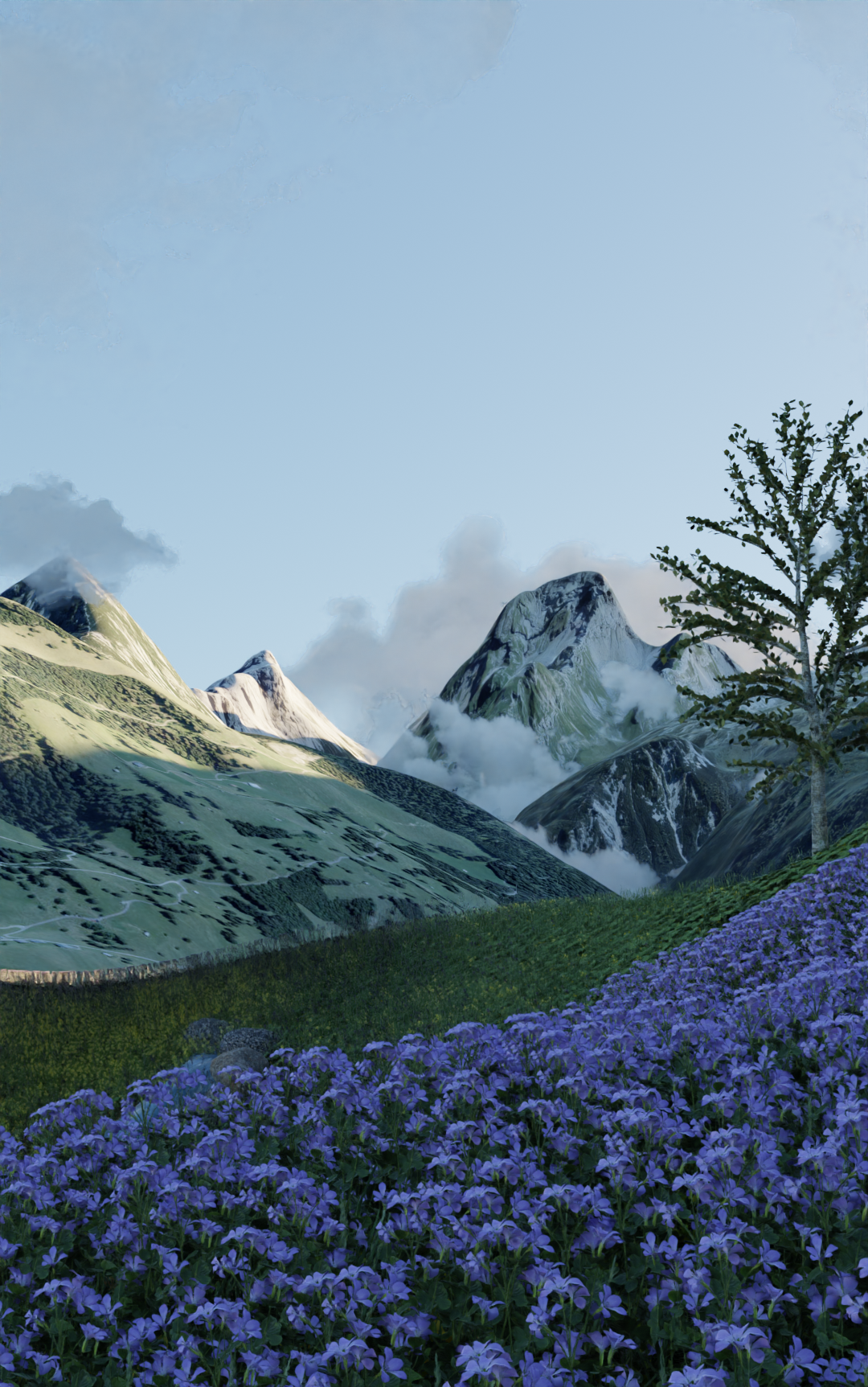An Uncanny Valley – Nature modelled after Images.

Project details
- Year
- 2023
- Programme
- Master – Interior Architecture: Research + Design
An Uncanny Valley is an audiovisual installation which processes thoughts and insights gathered during the thesis research on an UNESCO Biosphere Reserve in the Grosswalsertal, Vorarlberg. The research critically examined the mechanisms behind the creation of “nature” spaces and the limitedness of what we generally picture under the idea of “real nature”. The rendered videos base on the spatial policies, plant inventories and other rigid mechanisms which constitute the biosphere reserve and allow the viewer to observe the valley through a sort-of-portal. The valley is in full bloom, changing only to remain pleasant to the viewer’s eye. The mountains are higher, sunrise and sunset are longer and more often, there are no airplane noises, humans or other disturbances. It renders out invisible ideals we hold but that are rarely given shape to. It challenges the viewer to question underlying ideas we all hold towards “real nature”. Because eventhough it looks it at first glance, this is not a representation of real nature at all.








Andreas Höfert is interested in developing a more accurate understanding of the world and the processes of life in general, contemplating on the subject of change, climate crisis, digital life and the place of humans within all that. Understanding the human struggle for survival and fulfillment, the destruction it creates as well as the emergence of digital life forms not as separate to the natural world but as deeply integrated within it all.
In his work he challenges dualistic epistemological frameworks by which we still create explanations and separations of the world in means of black and white, 0 and 1, us and them, digital and physical, human and non-human, good and bad. His research efforts go into understanding situations beyond these terms instead capturing the complex entanglements that are present in each situation and which gave rise to it. This research informs his design practice and vice versa.
His design practice often makes use of digital tools to give form to mental images, experiential realities that exist in the non-physical spheres. He uses installations to activate these spatially and create immersions that allow the viewer to experientially understand a research based, (self)critical message.
He holds a Bachelor of Science in Product Design as well as a Master of Arts from the Master of Interior Architecture: Research and Design from the Piet Zwart Institute.